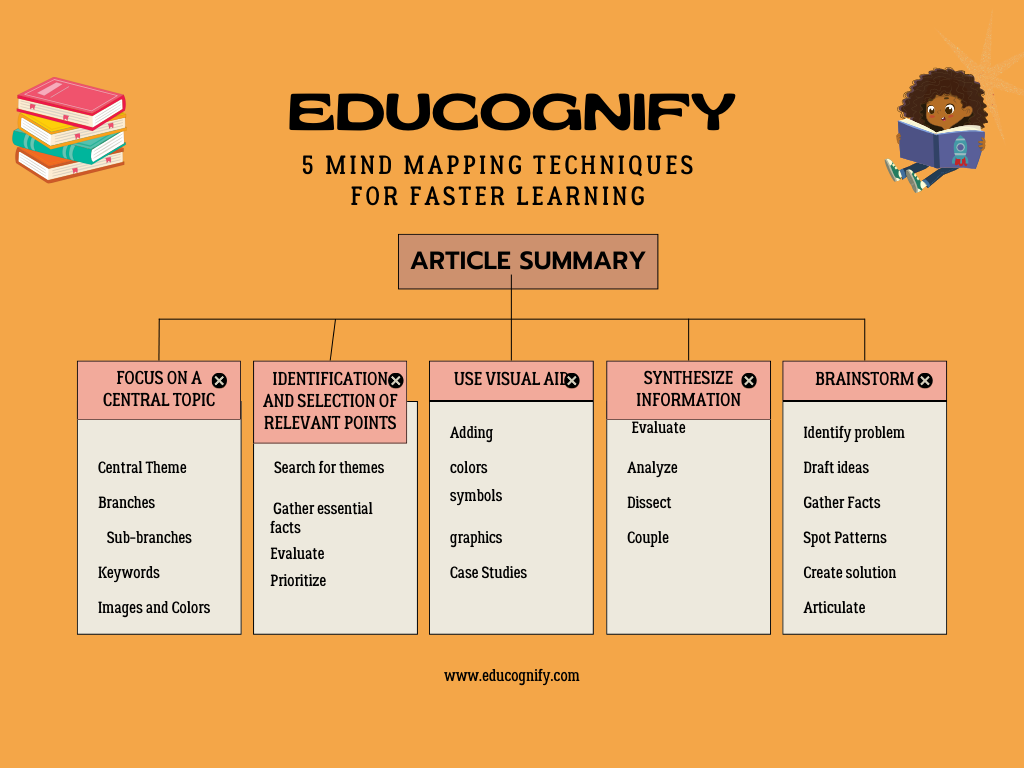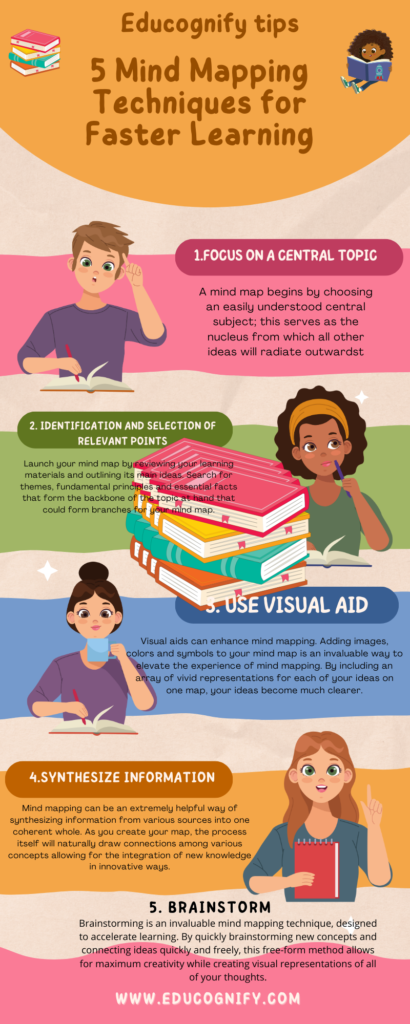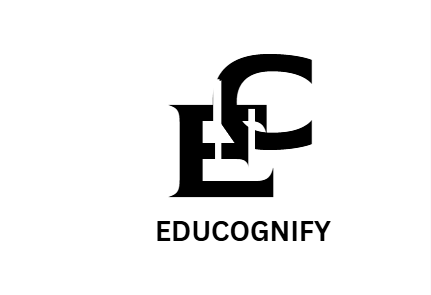
Are you seeking an effective technique to enhance learning and information retention? Mind mapping may provide the solution. This visual thinking tool helps organize ideas, foster creativity and speed up the learning process.5 Mind Mapping Techniques for Faster Learning
Mind maps utilize your mind’s natural tendency for nonlinear thinking to capture and connect information more efficiently than traditional note-taking methods. I will present five mind mapping techniques, which could revolutionize how you absorb and recall knowledge. These strategies will equip you with skills needed for faster learning as well as to retain knowledge more efficiently than before.
What Is Mind Mapping?
Mind mapping is an efficient visual thinking technique used to organize information, generate ideas and enhance learning. This technique involves drawing diagrams that represent concepts, ideas and their associations in an organized but nonlinear format, with main topics or concepts at its center with associated ideas extending outward from it.
Key Elements of Mind Mapping
- Central Theme: The main topic or concept is placed at the center of the map.
- Branches: Major ideas or subtopics radiate from the central theme.
- Sub-branches: More detailed information extends from the main branches.
- Keywords: Concise words or phrases are used to represent ideas.
- Images and Colors: Visual elements are incorporated to enhance memory retention and creativity.
Mind mapping takes advantage of your brain’s natural tendency for associative thought to provide a powerful method for brainstorming, note taking, problem-solving and studying. By visually representing information, mind maps can help you quickly grasp complex concepts and identify connections between different ideas.
5 Mind Mapping Techniques for Faster Learning
Mind mapping can transform how we learn and retain information, by tapping into your brain’s natural ability to process spatially organized concepts. Mind maps make learning faster and comprehension better overall!
Let’s examine five mind mapping techniques that can accelerate your learning experience. Each offers distinct benefits for specific types of information or learning styles; by mastering these approaches, complex subjects will become much simpler to access more quickly and easily. Let’s delve into each technique individually to gain more insight into its power to transform our educational journeys.

Focus On A Central Topic
A mind map begins by choosing an easily understood central subject; this serves as the nucleus from which all other ideas will radiate outwards. Start off your map by writing your main concept or subject directly in the middle of your page using either single words or short phrases, something as simple as this will do the job nicely!
Select a topic that captures the essence of what you want to learn or discuss, like Cell Structure in biology studies if studying biology as your central topic. A wide enough scope should allow multiple subtopics without losing focus; you could select this core idea with which multiple subtopics could emerge while still remaining focused enough for effective discussion.
Visually distinguish your central topic. Make it stand out with larger font size or bold text or by surrounding it within a shape such as a circle or rectangle for maximum visual impact and to provide a starting point for a mind mapping journey. A well-defined central topic sets the stage for more efficient learning experiences!
Identification and Selection of Relevant Points
When creating a mind map to aid fast learning, one of the initial key steps involves selecting and identifying relevant points from your study material. This requires thoughtful analysis and deliberation as you use key concepts from complex information into key ideas.
Launch your mind map by reviewing your learning materials and outlining its main ideas. Search for themes, fundamental principles and essential facts that form the backbone of the topic at hand that could form branches for your mind map.
Not all information carries equal weight; evaluate and prioritize each point accordingly, considering which concepts are fundamental and which can serve as supplements. Doing this will enable your mind map to effectively organize itself with crucial points positioned near its center before branching outward.
As you identify relevant points, look for connections among various concepts to form the links of your mind map and visualize how different ideas interact and support one another, this interlinked approach facilitates greater comprehension and retention of material.
Use Visual Aid
Visual aids can enhance mind mapping. Adding images, colors and symbols to your mind map is an invaluable way to elevate the experience of mind mapping. By including an array of vivid representations for each of your ideas on one map, your ideas become much clearer.
Implementing images or icons into your mind map nodes can assist with quickly recognizing and recalling key concepts, like innovative ideas. For example, use a lightbulb icon for innovative ideas or a clock symbol for time-sensitive tasks. This visual shorthand allows faster information processing and retention.
Employ a color scheme for categorizing various branches or themes within your mind map. This technique helps visually organize information quickly while quickly recognizing relationships among concepts, for instance using warm hues for high priority items while cooler tones represent background details.
Varying the shapes and sizes of nodes helps visually represent their importance or hierarchy within a mind map. Larger nodes could represent main ideas while smaller nodes provide supporting details, this visual hierarchy helps readers quickly grasp your overall thought structure at once.
Synthesize Information
Mind mapping can be an extremely helpful way of synthesizing information from various sources into one coherent whole. As you create your map, the process itself will naturally draw connections among various concepts allowing for the integration of new knowledge in innovative ways.
Start by centering your main topic. As you add branches for subtopics, look for ways to link ideas from across various areas, using color coding or symbols can make it easier to spot patterns and relationships!
Summarize the main information from each major branch into short phrases or keywords to strengthen understanding and make information more memorable. This technique may help increase comprehension while making material easier to absorb and retain.
As your mind map evolves, you may become aware of areas in which your knowledge gaps remain unfilled. These gaps become obvious visual cues, prompting you to seek out additional information to complete your understanding of the topic.
Brainstorm
Brainstorming is an invaluable mind mapping technique, designed to accelerate learning. By quickly brainstorming new concepts and connecting ideas quickly and freely, this free-form method allows for maximum creativity while creating visual representations of all of your thoughts.
Start by writing down your main topic at the center of a blank page, and let your imagination run free as you write down related concepts, keywords, associations or anything that comes to mind based on this central idea. Don’t limit your own thinking here, capture as many ideas as you possibly can!
As you brainstorm, seek patterns and relationships among different concepts. Create a web of knowledge by drawing lines between related ideas. This process helps visualize the big picture while uncovering insights you would have missed otherwise.
Once your initial ideas have been exhausted, take a step back and review your mind map. Highlight key concepts; rearrange branches where necessary in order to create an orderly flow of information; this refinement process solidifies understanding while aiding memory retention.
Research findings Mind Mapping Techniques for Faster Learning
According to a study by The efficacy of the ‘mind map’ study technique Paul Farrand 1, Fearzana Hussain, Enid Hennessy June 2002, Mind maps provide an effective study technique when applied to written material
Again, another research finding “Using Mind Maps: Visualizing Your Mind” conducted by Paul Andrew Farrand University of Exeter shows that mind mapping techniques for faster learning enhances memory retention.
According to RGUHS Journal of Nursing Sciences . The finding demonstrates the effectiveness of mind mapping learning technique over other existing study techniques

Conclusion
By employing these five powerful mind mapping techniques into your learning process, it can significantly boost your capacity to absorb and retain information. Whether you are an undergraduate student, professional educator, or lifelong learner; these methods offer versatile ways of organizing complex ideas while sparking creativity and accelerating the understanding of new concepts.
As you experiment with different approaches, you’ll likely discover which techniques resonate most with your unique learning style. Remember, the key to mastering mind mapping lies in consistent practice and refinement. So, grab your pen or digital device, and start mapping your way to faster, more effective learning today.
